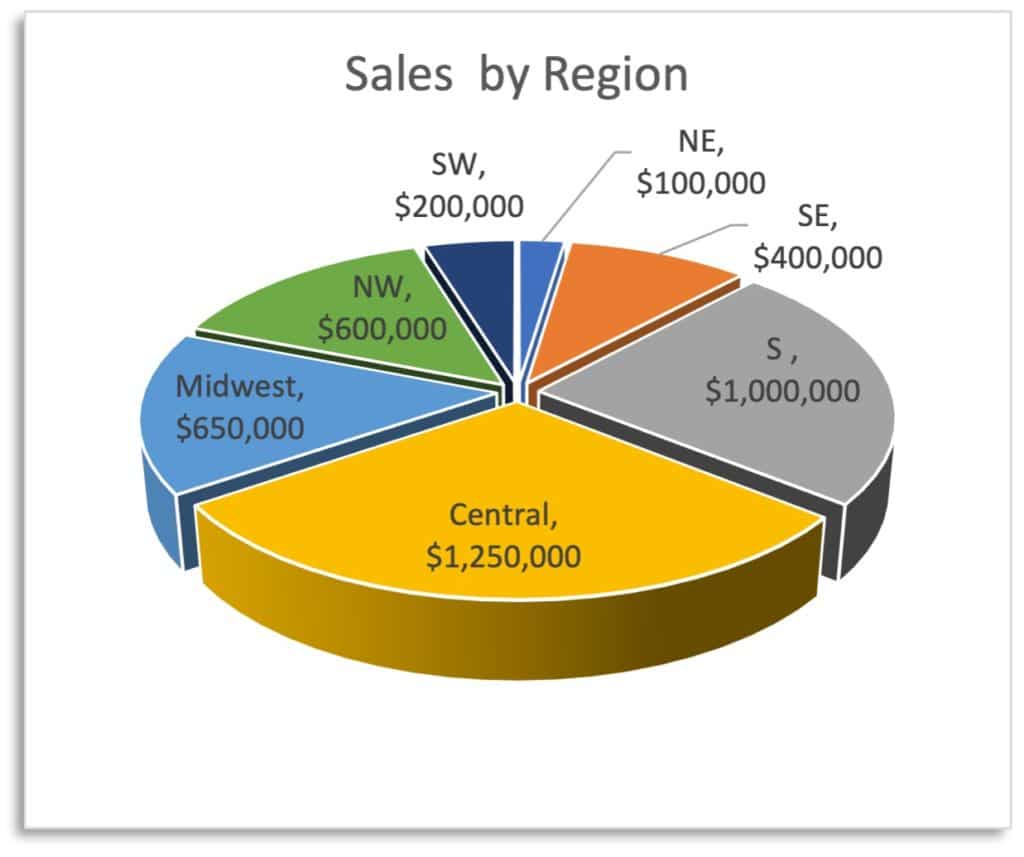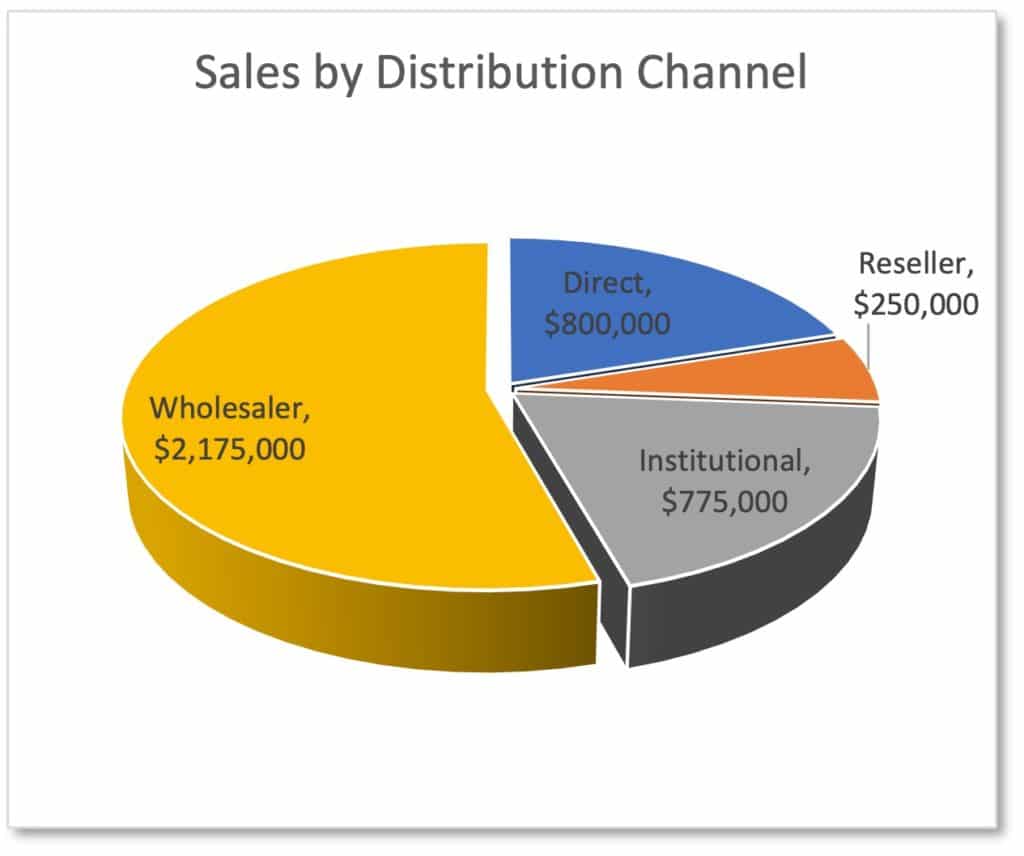Sales revenue is the fuel for your business.
Developing a product or service that provides value that customers will pay for is what businesses strive for. The revenue from these sales is what allows the business to generate profit, value and ultimately freedom for business owners. As businesses grow, they often sell products and services into various markets in multiple ways. Sometimes these sales are to groups of customers who were maybe not the original target market, however, they are growing to be a significant contribution to overall sales. We all want to increase our sales, but sometimes are not sure how to go about it. What can we focus on that will increase sales the most? What marketing strategies should we employ to grow the markets we serve? Which of the markets we serve has the most potential for growth with the least amount of cost?
In order to answer these questions, a business needs to understand its markets, where the revenue currently comes from, and where the growth opportunities are ripe for harvest. The structured evaluation of our revenues and market is known as ‘Market Segmentation Analysis.’ This involves understanding our markets, breaking them down into various segments, evaluating their historical performance and looking for opportunities to grow each one. Each market segment has unique characteristics that once known, help the business make informed decisions on where and how to invest in market growth. A marketing program for one segment may not be appropriate for another. Each market segment needs to be evaluated to determine the best approach to growth. In some cases, you may find that a particular market segment is not worth investing in and might even be losing money that could be better invested in other more promising markets.
There are as many ways to look at your market with marketing professionals.

Market segmentation is an art-form. Some typical marketing segment breakdowns include geographic, demographic, behavioral, psychological, distribution channel, etc.
Depending on your business and how you go to market, different marketing segment breakouts provide insight into your focus, investment, and even compensation or discounts. These concepts work for both business to consumer as well as business to business sales. Some companies may have both, which would likely require different approaches.
Geographic market segments can also referred to as ‘territories or regions.
These could be within the United States or globally. An example of a market segmentation for US sales might be Northeast, Southeast, Central, South, Midwest, Northwest, and Southwest. Some successful companies assign these territories or regions to individuals responsible for obtaining sales in their respective areas. Each area may have its own unique set of characteristics, pricing and buying habits.
Demographic market segments are typically made up of groups of buyers that have common characteristics.
For instance, age groups, gender, disposable income, capacity for trying new things, business or consumer, size of business, etc. In this area, it pays to be creative in understanding who your customers are, why they should be buying from you, and how you can best address their needs. If you have not previously looked at your buyers in these ways, do some ‘sampling’ by talking with your customers, creating surveys or mining product registrations that allow you to begin to collect this data.
The way you interface with your customers requires different approaches.
A retail store, for instance, may focus on some things for those who walk into their storefront to purchase or research. An on-line buyer may need other tools to facilitate their buying decisions. If you sell to resellers, wholesalers, or other businesses, you need to understand their needs, and decision processes. This type of segmentation is often called ‘Channel’ or distribution segments. Channels are the different ways the end user of a product or service becomes aware, researches and purchases the product or service. Examples of distribution channels are storefronts, on-line, distributors and wholesalers, direct sales, and perhaps even phone solicitation.

Many retail chains purchase their store inventory from wholesalers, who purchase from other distributors or wholesalers or directly from the manufacturers of the products. These ‘buyers’ have different requirements and needs that will assist you in marketing to them if you understand these things. A single company may sell its products directly to end users through phone, email and web-store, sell to ‘resellers’ who buy the products at a discount, and ‘resell’ them to specific groups, and distributors who serve various markets. Some of these distributors may have exclusive geographic or territorial boundaries. All of these can exist simultaneously, but each one requires a different set of messaging and service to grow your sales and understand the significance of each to your marketing approach, revenues, and profitability.
Another means of market segmentation is behavioral or psychological characteristics. Again, this is an area for you to be creative in defining these groups of customers or segments. One very common segmentation for companies developing ‘new’ products is the customer’s propensity for trying new things before they are commonly understood or fully developed. This segmentation might be broken into innovators, early adopters, early majority, late majority, and late adopters. Examples of these groups can be seen in the adoption of new or breakthrough technologies like electricity, telephones, automobiles, facsimile machines, personal computers, hand-held devices, cell phones, navigation devices, smart phones, apple or android watches, electric vehicles, and . . . Understanding these market segments and their unique behaviors and psyche can significantly aid your company in adapting and marketing to these unique groups and growing your sales over time.
Market studies by professional market research firms provide insight into your industry’s market segments.
While these market research reports can be pricy, the right ones at the right time may be worth it to propel your sales to the next level. Subscribe to your industry’s market research newsletters. While they continually send market research synopsis information in order to interest you in actually purchasing the entire market research study, they often revel important mega-trends within your particular industry. Staying in-tune with your industry’s trends, disruptions and new directions helps you manage your marketing and product development strategy and investment.
Once you have defined and organized your data within your markets various segments, you can begin to analyze them and mine the information to assist you in understanding and growing each one. This analysis is more than just percentage of revenues generated by each group, although that is a good start. It can also delve into the varying costs of marketing, distribution etc. This can allow you to evaluate growth potential and profitability by segment to help guide investment decisions in additional marketing or product changes to serve a particular segment. Understanding the ‘why’ and ‘how’ your customers purchase your product or service will help you refine your offering and improve its’ ultimate value to your customers.
A market segmentation analysis is one step towards growing your business.
In the early stages of a start-up, small business will sell to anyone who will buy, but don’t fully understand the ‘why’ or ‘how’ they make their decisions. As a company grows beyond its start-up phase and matures into a growing enterprise, this analysis can provide insight to help a business align its sales revenues, product mix, marketing messaging, and much more. This allows you to better understand your markets and make decisions based on the information gleaned from market segmentation analysis.



